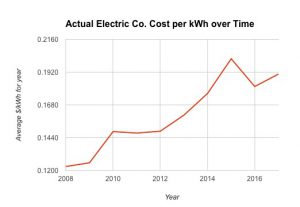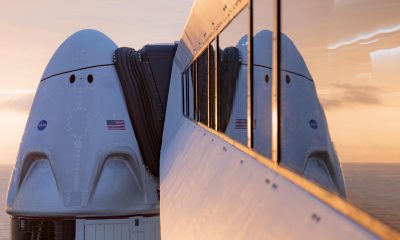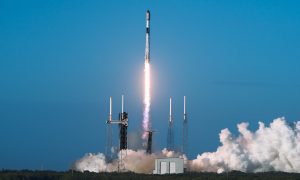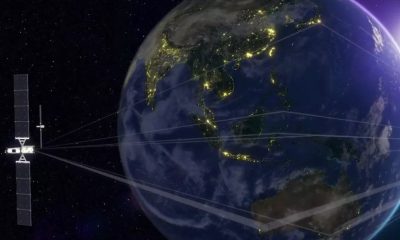News
Report: Solar savings through a SolarCity residential system

Having limited winter daylight hours combined with snow covered rooftops doesn’t make for good check out my huge solar savings conversation this month. But putting that aside, the overall economics behind my solar system tells a far greater story.
If you’ve been following along, you’ll recall that my journey with installing a SolarCity system dates back to late 2014. My system consists of 69 panels at 255W each for a total of 17.6kW (more specs on the system can be found on my Solar Generation page).
Solar Pricing
Massachusetts Electricity prices having been rising at approximately 9.5% year-over-year since 2008. When I started with SolarCity, my electricity price was set at $0.1627 per kWh including delivery, supply and taxes. Prices have continued to climb as seen on this chart.
The state went through a fun over-inflation and correction period in 2015, but the current rate I’m paying for electric is $0.1906 kWh with the best supplier I can find.
SolarCity sets their Power Purchase Agreement (PPA) prices based on your current electricity usage and comparable rates for the area that’s receiving their solar system. I had a number of options when I signed up including a variable rate, a fixed rate and an outright purchase but ended up opting for a 20-year fixed rate plan at $0.1420 kWh.
The way the PPA plan works is that I pay $0.1420 for every kWh generated by the SolarCity panels. The kWh they generate offsets the electricity I would consume. My savings initially worked out to be a difference of $0.0207 kWh or approximately 13% less. Recent savings have been in the $0.0486 kWh mark, or 25%, helped by the rise in electricity rates from utilities.
I incurred no installation or service costs when first setting up my SolarCity system, hence my entire cost for set up is based on the amount of power generated at $0.1420 kWh.
Affiliate: Get a solar cost estimate and find out how much solar can save for your home and business in your area.
Solar Costs
In the last 22 months, I’ve generated a whopping 33.8 MWh (33,800 kWh) of power. My cost for that was $4,800. The SolarCity bill will fluctuate depending on the amount of daylight hour and weather conditions.
In that same period, my electric company reported that I used 23,800 kWh of power. Since the solar power offsets that amount, my actual power use for those 22 months was 57,600 kWh — I use a lot of power between my Tesla, pool, A/C and other electronics we have throughout the house.
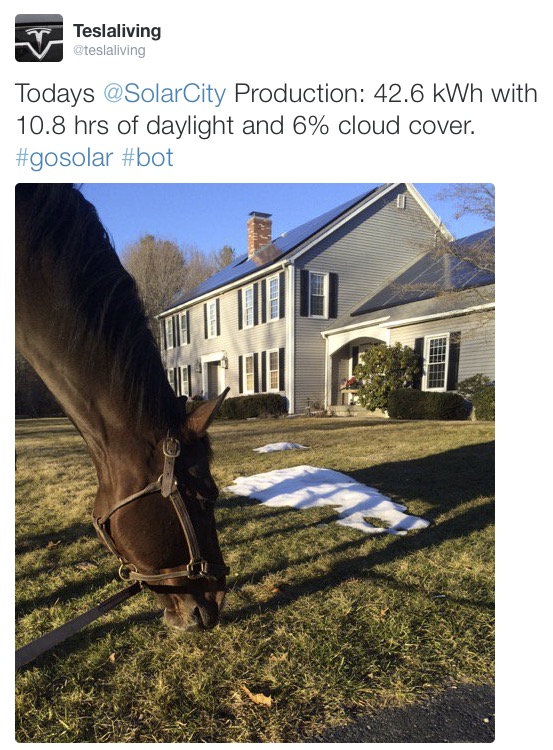
Follow @Teslaliving
About 59% of the power I need for my house and my Tesla comes from my SolarCity system. I wanted a system that could cover 100% of my needs but National Grid (local electric company) blocked that.
For the 23,800 kWh I purchased from the electric company, I paid $4,595, or $0.1930 kWh (averaged over the 22 months). My total electric cost (money paid to electric company and to SolarCity) for the 22 months was $9,395 or about $427/month.
While I consume a lot of power, 59% of it is provided by the sun.
Solar Savings
When I first signed up with SolarCity, they provided a $1,000 bonus if you registered for a solar system after buying a Tesla. That’s what I did and that’s how I received my $1,000 check form SolarCity.
They also had a referral program at the time which credited you with $250 for each person that signed up for a new system. I managed to get one referral and one more check from SolarCity.
All in all, I started 22 months ago with no money down and $1,250 in my pocket and a nice new solar system on my house. Not a bad start!
Had I purchased all my power from my electricity company at the average of $0.1930 kWh it would have cost me a total of $11,117. But thanks to SolarCity, my total cost was $9,395, so my savings was $1,722 over the 22 months. I expect savings and solar benefits will continue to grow over the next 20 years as the electric company continues to raise their rates.
SolarCity doesn’t fully capture the amount of savings that can be had through their system since the initial quote is based on current electricity rates, at the time of the quote. Rates climb over time especially in dense urban areas.
My savings thus far has been more than twice the amount SolarCity originally outlined! Now, if we add in the referral checks, my savings goes up to $2,972. The referrals don’t necessarily scale over time and may get updated so that needs to be factored into the equation.
Summary
For no money down and no risk, I’ve saved about $3,000 in just under 2 years (27% of what I would have paid) while generating green energy and taking load away from an already overloaded power grid.
When I did the math before signing up I knew the system would be a good deal and I’m very happy to see the results proving out. Since I’m on the power purchase program, I don’t have to worry about equipment depreciation, loss in solar cell effectiveness over time (I only pay for what they generate) or a whole slew of other things. By the time my plan is up, much better systems will be available.
If you’re interested in exploring solar power for your house and have enjoyed my posts thus far, please consider using my referral link to get started. SolarCity will do a free analysis of your situation and let you know if a solar system may work for you: share.solarcity.com/teslaliving
May the Sun be with you!
Elon Musk
Tesla investors will be shocked by Jim Cramer’s latest assessment
Jim Cramer is now speaking positively about Tesla, especially in terms of its Robotaxi performance and its perception as a company.

Tesla investors will be shocked by analyst Jim Cramer’s latest assessment of the company.
When it comes to Tesla analysts, many of them are consistent. The bulls usually stay the bulls, and the bears usually stay the bears. The notable analysts on each side are Dan Ives and Adam Jonas for the bulls, and Gordon Johnson for the bears.
Jim Cramer is one analyst who does not necessarily fit this mold. Cramer, who hosts CNBC’s Mad Money, has switched his opinion on Tesla stock (NASDAQ: TSLA) many times.
He has been bullish, like he was when he said the stock was a “sleeping giant” two years ago, and he has been bearish, like he was when he said there was “nothing magnificent” about the company just a few months ago.
Now, he is back to being a bull.
Cramer’s comments were related to two key points: how NVIDIA CEO Jensen Huang describes Tesla after working closely with the Company through their transactions, and how it is not a car company, as well as the recent launch of the Robotaxi fleet.
Jensen Huang’s Tesla Narrative
Cramer says that the narrative on quarterly and annual deliveries is overblown, and those who continue to worry about Tesla’s performance on that metric are misled.
“It’s not a car company,” he said.
He went on to say that people like Huang speak highly of Tesla, and that should be enough to deter any true skepticism:
“I believe what Musk says cause Musk is working with Jensen and Jensen’s telling me what’s happening on the other side is pretty amazing.”
Tesla self-driving development gets huge compliment from NVIDIA CEO
Robotaxi Launch
Many media outlets are being extremely negative regarding the early rollout of Tesla’s Robotaxi platform in Austin, Texas.
There have been a handful of small issues, but nothing significant. Cramer says that humans make mistakes in vehicles too, yet, when Tesla’s test phase of the Robotaxi does it, it’s front page news and needs to be magnified.
He said:
“Look, I mean, drivers make mistakes all the time. Why should we hold Tesla to a standard where there can be no mistakes?”
It’s refreshing to hear Cramer speak logically about the Robotaxi fleet, as Tesla has taken every measure to ensure there are no mishaps. There are safety monitors in the passenger seat, and the area of travel is limited, confined to a small number of people.
Tesla is still improving and hopes to remove teleoperators and safety monitors slowly, as CEO Elon Musk said more freedom could be granted within one or two months.
News
Tesla launches ultra-fast V4 Superchargers in China for the first time
Tesla has V4 Superchargers rolling out in China for the first time.

Tesla already has nearly 12,000 Supercharger piles across mainland China. However, the company just initiated the rollout of the ultra-fast V4 Superchargers in China for the first time, bringing its quick-charging piles to the country for the first time since their launch last year.
The first batch of V4 Superchargers is now officially up and running in China, the company announced in a post on Chinese social media outlet Weibo today.
The company said in the post:
“The first batch of Tesla V4 Superchargers are online. Covering more service areas, high-speed charging is more convenient, and six-layer powerful protection such as rain and waterproof makes charging very safe. Simultaneously open to non-Tesla vehicles, and other brands of vehicles can also be charged. There are more than 70,000 Tesla Superchargers worldwide. The charging network layout covers 100% of the provincial capitals and municipalities in mainland China. More V4 Superchargers will be put into use across the country. Optimize the charging experience and improve energy replenishment efficiency. Tesla will accompany you to the mountains, rivers, lakes, and seas with pure electricity!”
The first V4 Superchargers Tesla installed in China are available in four cities across the country: Shanghai, Zhejiang, Gansu, and Chongqing.

Credit: Tesla China
Tesla has over 70,000 Superchargers worldwide. It is the most expansive and robust EV charging network in the world. It’s the main reason why so many companies have chosen to adopt Tesla’s charging connector in North America and Europe.
In China, some EVs can use Tesla Superchargers as well.
The V4 Supercharger is capable of charging vehicles at speeds of up to 325kW for vehicles in North America. This equates to over 1,000 miles per hour of charging.
Elon Musk
Elon Musk hints at when Tesla could reduce Safety Monitors from Robotaxi
Tesla could be reducing Safety Monitors from Robotaxi within ‘a month or two,’ CEO Elon Musk says.

Elon Musk hinted at when Tesla could begin reducing Safety Monitors from its Robotaxis. Safety Monitors are Tesla employees who sit in the front passenger seat during the driverless rides, and are there to ensure safety for occupants during the earliest rides.
Tesla launched its Robotaxi fleet in Austin last Sunday, and after eight days, videos and reviews from those who have ridden in the driverless vehicles have shown that the suite is safe, accurate, and well coordinated. However, there have been a few hiccups, but nothing that has put anyone’s safety in danger.
A vast majority — close to all of the rides — at least according to those who have ridden in the Robotaxi, have been performed without any real need for human intervention. We reported on what was the first intervention last week, as a Safety Monitor had to step in and stop the vehicle in a strange interaction with a UPS truck.
Watch the first true Tesla Robotaxi intervention by safety monitor
The Tesla and UPS delivery truck were going for the same street parking space, and the Tesla began to turn into it. The UPS driver parallel parked into the spot, which was much smaller than his truck. It seemed to be more of an instance of human error instead of the Robotaxi making the wrong move. This is something that the driverless cars will have to deal with because humans are aggressive and sometimes make moves they should not.
The Safety Monitors have not been too active in the vehicles. After all, we’ve only seen that single instance of an intervention. There was also an issue with the sun, when the Tesla braked abnormally due to the glare, but this was an instance where the car handled the scenario and proceeded normally.
With the Robotaxi fleet operating impressively, some are wondering when Tesla will begin scaling back both the Safety Monitors and Teleoperators that it is using to ensure safety with these early rides.
CEO Elon Musk answered the inquiry by stating, “As soon as we feel it is safe to do so. Probably within a month or two.”
As soon as we feel it is safe to do so.
Probably within a month or two. We continue to improve the Tesla AI with each mile driven.
— Elon Musk (@elonmusk) June 30, 2025
Musk’s response seems to confirm that there will be fewer Teleoperators and Safety Monitors in the coming months, but there will still be some within the fleet to ensure safety. Eventually, that number will get to zero.
Reaching a point where Tesla’s Robotaxi is driverless will be another significant milestone for the company and its path to fully autonomous ride-sharing.
Eventually, Tesla will roll out these capabilities to consumer-owned vehicles, offering them a path to generate revenue as their car operates autonomously and completes rides.
For now, Tesla is focusing on perfecting the area of Austin where it is currently offering driverless rides for just $4.20 to a small group of people.
-

 News5 days ago
News5 days agoTesla Robotaxi’s biggest challenge seems to be this one thing
-

 News2 weeks ago
News2 weeks agoTesla confirms massive hardware change for autonomy improvement
-

 Elon Musk2 weeks ago
Elon Musk2 weeks agoElon Musk slams Bloomberg’s shocking xAI cash burn claims
-

 News2 weeks ago
News2 weeks agoTesla China roars back with highest vehicle registrations this Q2 so far
-

 News2 weeks ago
News2 weeks agoTesla features used to flunk 16-year-old’s driver license test
-

 News2 weeks ago
News2 weeks agoTesla dominates Cars.com’s Made in America Index with clean sweep
-

 News2 weeks ago
News2 weeks agoTexas lawmakers urge Tesla to delay Austin robotaxi launch to September
-

 News2 weeks ago
News2 weeks agoTesla’s Grok integration will be more realistic with this cool feature

